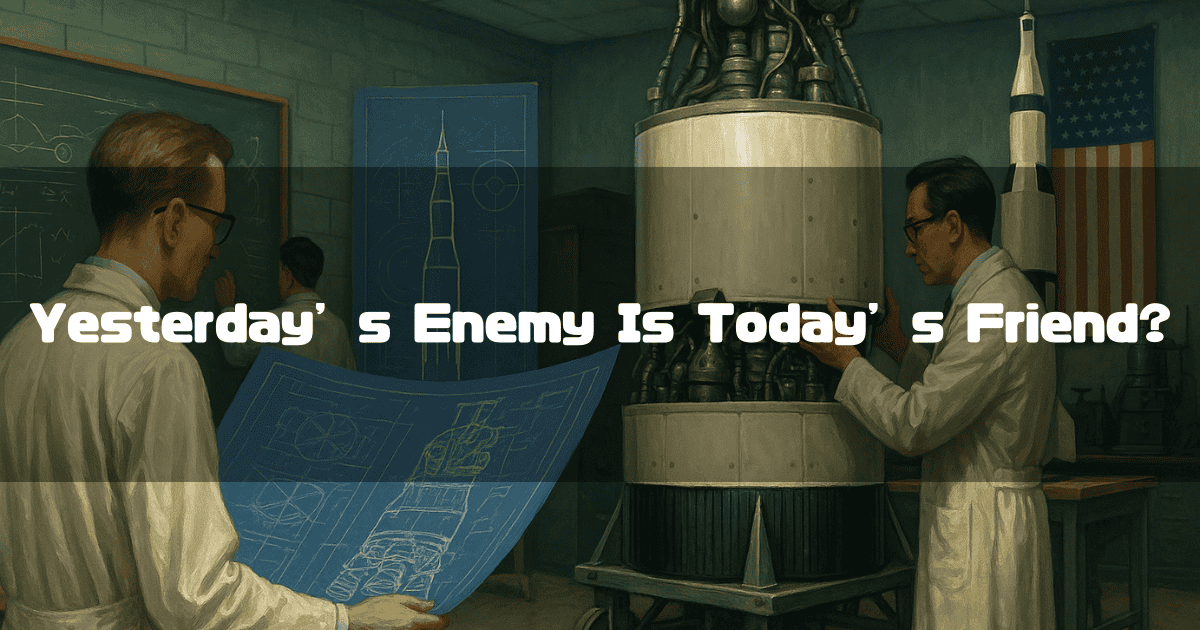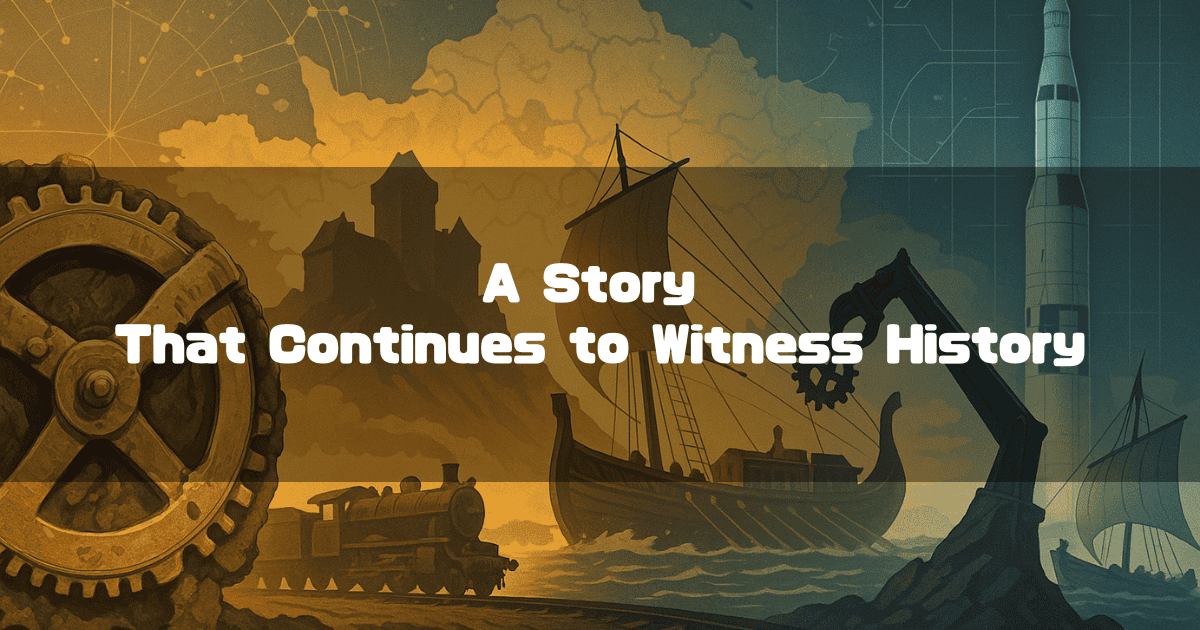Indiana Jones and the Dial of Destiny is a 2023 feature film directed by James Mangold. As with the previous films in the Indiana Jones series, this installment masterfully blends various historical facts and urban legends into its narrative.
While you can certainly enjoy the movie without any prior historical knowledge, having some background can prevent moments of confusion and enhance the experience. This article will explain some of the key historical points.
In this article, we will cover:
- The state of the war in France in 1944 (the setting of the film’s opening),
- The model for Dr. Schmidt,
- The Siege of Syracuse (the ancient battle Indy and his companions find themselves in),
- The Antikythera mechanism (Archimedes’ Dial).
*This article is an English translation of the original Japanese article, “「インディ・ジョーンズと運命のダイヤル」を見る時に役立つ歴史的知識集-第二次大戦、シュミット博士のモデル、シラクサ包囲戦、そしてアンティキティラ島の機械-“
Let an AI walk you through the highlights of this post in a simple, conversational style.
The Situation in France in 1944

At the beginning of the film, Indy and his team infiltrate a castle in the French Alps (Wikipedia). This castle is fictional; filming actually took place at Bamburgh Castle in the United Kingdom (Reference: the official Bamburgh Castle website’s page on filming).
In that castle, the German army was hastily fleeing with artworks, a depiction based on historical fact.
During World War II, Nazi Germany systematically plundered cultural assets on a national scale throughout occupied Europe. In France, particularly, a vast number of paintings, sculptures, ancient documents, and artifacts were confiscated from wealthy Jewish families, private collectors, and museums.
These looted items were destined either for the “Führermuseum,” which Hitler dreamed of building in his hometown of Linz, or for the private collections of high-ranking Nazi officials like Reichsmarschall Hermann Göring.
It was not uncommon for remote castles and monasteries in the French countryside to be used as temporary storage and sorting locations for these confiscated artworks before they were transported to Germany. Secluded and well-fortified, these castles were ideal for protecting the valuable cultural assets from Allied bombing and for preventing their recapture by the French Resistance.
The film’s setting, where a castle has been turned into a massive warehouse for Nazi-looted art, is thus consistent with this historical background.
Furthermore, the year “1944” in the opening scene marks a dramatic turning point in the war in France:
- June 6: D-Day (The Normandy Landings)
Allied forces land in northern France, establishing the Western Front. This puts the German forces in France under immense pressure from the north and west. - August 15: Operation Dragoon
Allied forces also land in the Provence region of southern France, near the film’s setting. This move puts German troops stationed around the French Alps at risk of being caught between the advancing forces from the north and the new front from the south.
Transporting Cultural Assets Amidst the Chaos
By late 1944, the time frame of the film’s opening, German forces throughout France were in full retreat toward the German border under the relentless Allied assault.
This withdrawal was extremely chaotic, with units frequently being cut off and separated. In this environment, the German army attempted to hastily transport the looted artworks stored in France back to Germany by train before they fell into Allied hands.
The “train full of looted items” depicted in the movie accurately reflects these last-ditch efforts to transport stolen goods during the chaos of the retreat. The fact that the “Lance of Longinus” and the “Dial” were being transported from the castle by train illustrates the German army’s desperation to bring their valuable spoils of war back to the homeland, even as Allied forces closed in.
The Model for Dr. Schmidt

In the main story, the villain Jürgen Voller goes by the name “Dr. Schmidt” and is involved in NASA’s rocket development. While “Dr. Schmidt” is a fictional character, he appears to be based on both a real individual and a collective group.
After the end of World War II, the United States sought to secure Germany’s advanced scientific knowledge, especially in rocket technology, in preparation for the Cold War with the Soviet Union.
To this end, the U.S. government launched a secret program called Operation Paperclip (Wikipedia). The plan was to recruit brilliant scientists and engineers who had collaborated with the Nazis, turn a blind eye to their pasts, and bring them to America. It is said that over 1,600 German scientists were brought to the U.S. through this operation (this is the collective group model).
The most famous among them was Dr. Wernher von Braun (who is likely the individual model for Dr. Schmidt). He was the central figure in the development of the world’s first ballistic missile, the “V-2 rocket,” during the Nazi era.
After moving to America, he led the development of the Saturn V rocket (Wikipedia) at NASA. This was the very rocket that carried humanity to the moon for the first time during the Apollo program.
Thus, the character of Voller (Dr. Schmidt)—a former Nazi scientist hiding his past while being deeply involved in NASA’s space program, particularly the Apollo project—is a fictional portrayal strongly rooted in historical fact.
The Siege of Syracuse

The “Siege of Syracuse,” which serves as the setting for the film’s climax, is a famous battle in ancient history where the incredible genius of the scientist Archimedes was put on full display.
Why Was Syracuse Besieged?
The battle took place from 214 to 212 BC, during the Second Punic War—a major conflict between the Roman Republic and Carthage for control of the Mediterranean.
Syracuse, a powerful Greek city-state on the island of Sicily, was originally an ally of Rome. However, after Rome suffered a historic defeat against Carthage at the Battle of Cannae, Syracuse abandoned Rome and switched its allegiance to Carthage.
Fearing that the strategic stronghold of Syracuse would fall into enemy hands, Rome dispatched a large army led by General Marcus Claudius Marcellus to lay a complete siege on the city by land and sea.
Archimedes’s Astonishing Defensive Weapons
Although the Roman army had overwhelming numbers, Syracuse had a genius on its side: the preeminent mathematician and physicist of his time, Archimedes. To defend his homeland, he applied his knowledge to develop numerous innovative defensive weapons that tormented the Roman forces for an extended period.
- The Claw of Archimedes
This weapon was said to be a giant crane-like arm extending from the city walls. It would use a grappling hook at its end to grab attacking Roman warships, lift them into the air, and then either capsize them or smash them against the cliffs. - Super-Powered Catapults
By applying the principle of the lever, Archimedes developed catapults with incredible range and destructive power. They launched massive rocks and lead weights at Roman camps and ships, inflicting heavy damage. - Archimedes’ Heat Ray (*Legend)
According to legend, Archimedes used giant mirrors or polished shields to focus sunlight onto a single point, setting Roman warships on fire. While its feasibility is still debated today, the story is passed down as an anecdote symbolizing the terrifying nature of Archimedes’s inventions.
It is said that these weapons made Roman soldiers so fearful that they were terrified to even approach the walls of Syracuse.
The Fall of Syracuse and the Death of Archimedes
Despite Archimedes’s valiant efforts, after a siege of more than two years, Syracuse finally fell to a surprise Roman attack.
The Roman general Marcellus held Archimedes’s talent in high regard and had given strict orders that he be captured alive and unharmed.
However, a Roman soldier who stormed the city found an old man engrossed in a mathematical problem, drawing figures on the ground. Unaware that the man was Archimedes, the soldier addressed him. Archimedes is said to have retorted, “Do not disturb my circles” (Noli turbare circulos meos). Enraged, the soldier defied his orders and killed him on the spot.
The film’s conclusion presents a historical “what if”: what if Archimedes, in this desperate situation, had created a device to seek help from the future?
About the Antikythera Mechanism

“Archimedes’ Dial,” the key to the story in the film Indiana Jones and the Dial of Destiny, was modeled after a real-life ancient Greek artifact: the Antikythera mechanism (Wikipedia). Often called the “world’s oldest analog computer,” it was built with a level of technology considered impossible for its time, making it a famous example of an out-of-place artifact (OOPArt).
What We Know for Sure Today
The mechanism was discovered by chance in 1901 in a Roman-era shipwreck off the coast of the Greek island of Antikythera, along with marble statues and other artifacts. Recent studies using X-rays and CT scans have revealed the following (though this understanding may change in the future):
- Date of Manufacture: Estimated to be between 150 BC and 100 BC.
- Structure: An extremely complex bronze machine composed of at least 30 precision gears.
- Functions:
- Calculated and displayed the precise positions of the sun and moon.
- Predicted when solar and lunar eclipses would occur based on the approximately 18-year “Saros cycle.”
- Included a function to display the cycle of athletic games held every four years, such as the ancient Olympics.
Research on the device continues to this day.
The Connection to Archimedes?
In the film, the dial is said to have been created by Archimedes. In reality, the prevailing theory is that while there is no direct evidence that Archimedes himself built it, his inventions and ideas were likely deeply influential in its creation.
Archimedes died in 212 BC, which is a bit earlier than the estimated manufacturing date of the mechanism. However, the Roman statesman Cicero (106 BC–43 BC) wrote in his works that Archimedes had created two “orreries” or celestial spheres that replicated the movements of the heavenly bodies.
Because of this, it is believed that the Antikythera mechanism was not made by Archimedes himself, but rather by his successors (such as his school of thought) who inherited his technology and design principles, and that it was constructed after his death. The island of Rhodes, a center for astronomy, is considered a likely place of manufacture.
In essence, the film’s premise is a work of fiction that expands on this historical context, imagining, “What if Archimedes himself had built the ultimate astronomical calculator?”
About the Author
Recent Posts
- 2025-10-15
Indiana Jones and the Dial of Destiny(2023):Historical Background-WWII, the Real Dr. Schmidt, the Siege of Syracuse, and the Antikythera Mechanism - 2025-10-08
Why Does Children Who Chase Lost Voices Feel So Ghibli-esque? [Makoto Shinkai’s “Tale of Farewell”] - 2025-10-07
5 Centimeters per Second: Characters, Voice Actors, Character Analysis and Character Map - 2025-10-06
5 Centimeters per Second: Full Synopsis, Analysis, Ending Explained & Character Map (Spoilers) - 2025-10-04
5 Centimeters per Second Is Neither Depressing Nor Terrible: A Positive Interpretation of the Film















